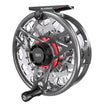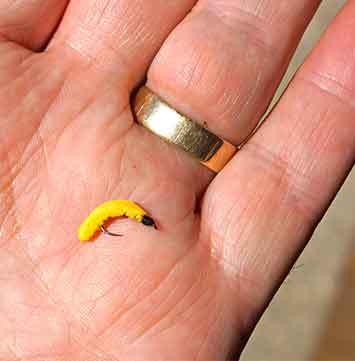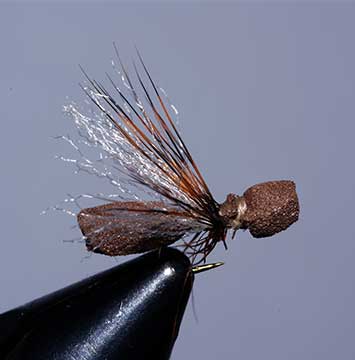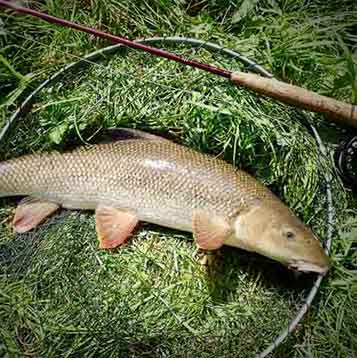A couple of years back I visited New Zealand South Island at the very kind invitation of Gore resident Wayne Neiman who had read my articles on tiny flies in Fly Fishing & Fly Tying magazine. My arrival in early January coincided with very high, coloured water on the Mataura River system, but with Wayne’s advice I managed a few nice brown trout, mostly in the 2 to 3lb range, on a size 18 Shuttlecock during sparse hatches of Deleatidium duns (very similar to the Iron Blue duns in the UK). However, after the first week the weather turned very hot (30 degrees C plus) & day-time fly hatches ceased (despite the Mataura being famed for its huge upwing hatches): evening Sedge activity was equally bad with only an very isolated rise to the small number of Grannon-like Sedges. Things were looking a bit desperate. In fact, on my return home, I read an article by Bob Wyatt (one of the UK’s top fly fishers who emigrated to New Zealand for the fishing) explaining that fish that were not feeding couldn’t be caught & saying that during the period of my stay the Mataura system fish just weren’t feeding.

Willow Grub galls
Fortunately one very hot, frustrating, day I noticed a couple of good fish sipping deep under some overhanging willow trees. Crawling behind cover to within a few feet of them I could clearly see they were feeding on tiny yellow Sawfly caterpillars (Willow Grubs) that were falling out of the red galls that covered every willow leaf. Unfortunately I hadn’t done my homework well enough before the trip & so had no suitable pattern in my fly box. Thank God for improvisation! Fortunately I had some yellow, stick-on foam indicators. I shredded a size 18 Shuttlecock & threaded a very thin strip of yellow foam onto the hook. First cast & down my ‘fly’ was sipped, but there my good fortune ended as 5x tippet was not up to holding an angry big fish amongst a load of submerged willow branches & roots. Nevertheless the seeds had been sown for future success in less than ideal conditions.

Willow Grub
My first task was to locate sections of river that were overhung by lots of willow trees. A check on Google Maps with my iPod revealed a number of locations along the Mataura & its tributaries. More improvised yellow foam flies were made up with a black thread head & off I headed for middle of the day fishing in the baking sun amongst the willows. Why oh why are UK flyfishers so afraid of trees in the river? Without those dense willows I’d have been skunked.
To cut a long story short I landed a good number of stunning brown trout up to just over 5lb, averaging over 3lb, on the willow grubs & lost some much bigger fish in the snags despite stepping up to 3x tippet (far too thick & stiff for ideally presenting a size 18 fly). The fish seemed to be quite happy that my fly was quite a bit bigger than the real thing. It had to be since I needed a size 18 triple-heavy wire grub hook to stand any chance of landing a fish amongst the submerged snags & a fair bit of foam was needed to stop the fly sinking, although in a few instances I trimmed the foam down till the fly just started to sink in order to ‘anchor’ it into the surface & resist micro-drag. I found that fish populations were much lower in NZ than in the UK rivers so it was vital to search out where they were by lots of riverbank walks whilst carefully scanning the river with polaroid glasses.

I’m sure if I had hired a guide that I might have had more success with the very big trout that New Zealand is famous for but I much prefer to do my own thing & explore. If I ever get there again I’ll remember to tie up some willow grubs on strong hooks. So if you plan going to New Zealand this coming winter (their summer) make sure you have some Willow Grub imitations.

A good sized willow grubber is returned trees in the background on a tiny brook






















